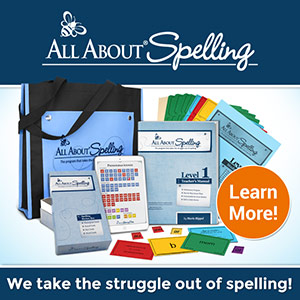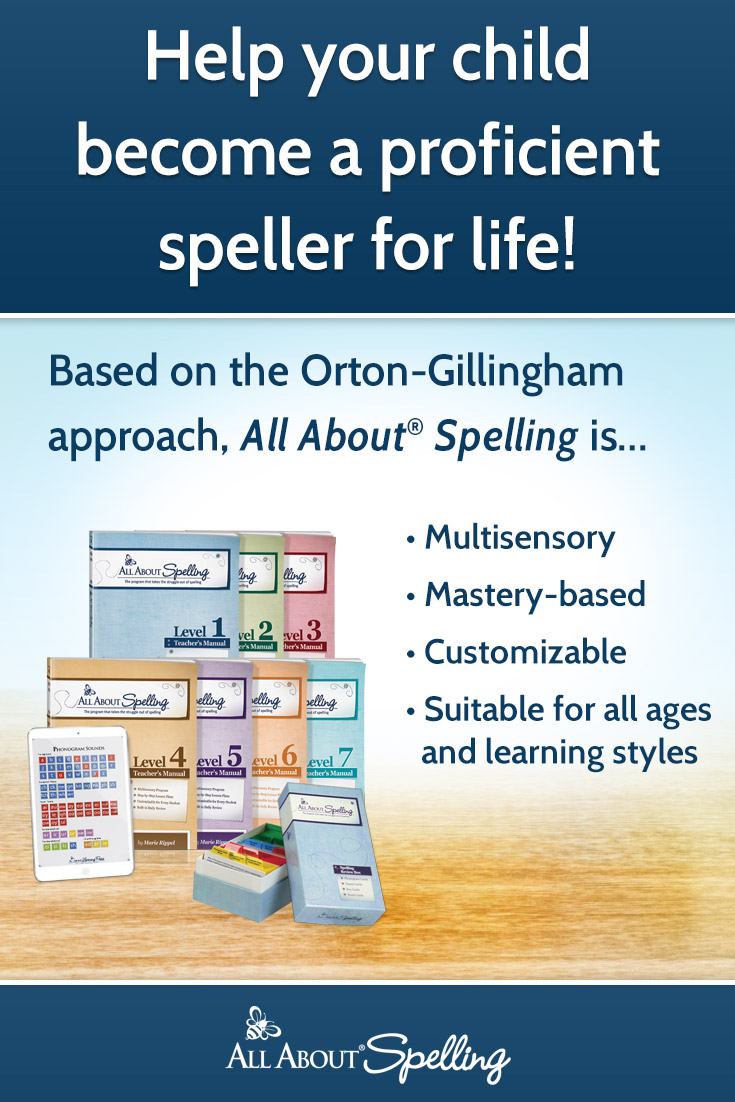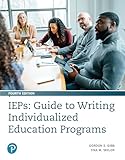Great Spelling IEP Goals for Kids with Dyslexia or Dysgraphia
If your child’s spelling is horrible, you need GREAT Spelling IEP Goals.
I’ve listed several examples of Spelling IEP Goals that are SMART, measureable goals. There’s an explanation of how to write smart spelling goals for IEPs too.
Feel free to use these example spelling goals for your child’s IEP. Adjust them to fit your child’s individual needs.
Before we dive into the spelling goals for IEPs, I’d like to point out something. IF your child KNOWS spelling rules, but fails to spell properly when writing, you might need the research-proven method. I used this method to help my son learn to spell better.
My son KNEW the spelling rules, however he didn’t apply them to his writing. Therefore, I went on a quest to find out WHAT WORKS for deep spelling issues. The research-proven method I found really worked to improve my son’s spelling by leaps and bounds. Check it out if you need a new approach because the old one isn’t working. 😉
On to the matter of spelling goals for IEPs:
If weekly spelling tests are the only spelling instruction your child gets, then he needs better instruction! You’ll want to put stronger spelling IEP goals in your child’s IEP.
You need specific, measurable goals. You’ll also need to be sure you have a spelling program that works for kids who have dyslexia.
Your child needs solid spelling IEP goals, so you will know IF your child is making good academic progress in spelling. Learn to write great spelling goals for IEPs and use example goals below.
How to write GREAT Spelling IEP Goals:
For your child to learn to to spell well, he needs to have:
- phonemic awareness.
- to know how to blend sounds for spelling simple words.
- to understand how to spell multi-syllable words.
- how to spell sight words that don’t follow phonemic rules, and
- must learn self-correction spelling skills.
At each stage of spelling ability, your child will need goals for each spelling skill.
Use the SMART acronym to write spelling goals for IEPs:

S = Specific – Goals are detailed about exactly what your child will achieve.
M = Measurable – You will specify how progress will be objectively measured.
A = Attainable – It is something your child is capable of learning.
R = Realistic – Not too complex or involved for your child to be unable to achieve the goal.
T = Time to goal specified – You decide how soon your child will achieve the goal.
To help you understand how to write measurable spelling IEP goals, there are sample spelling goals for IEPs below. These goals are for skills a child must master in order to spell well.
For your individual child, write goals that are worded kind of like these, but are based on your child’s current skill level. If you want make great goals for your child, then use the spelling goals for IEPs below as templates.
Additionally, you can create new goals or change these spelling goals for IEPs. This allows you to create great goals for your child’s IEP.
Here are some example, MEASURABLE ANNUAL Spelling IEP Goals:
The Special Education Playbook for Parents: The Complete Guide to Navigating the 504/IEP Process to Unlock Your Child's Unique Learning Profile and ... at School (Thriving Beyond Labels Toolbox)
$19.99 (as of 23 December 2025 01:20 GMT -05:00 - More infoProduct prices and availability are accurate as of the date/time indicated and are subject to change. Any price and availability information displayed on [relevant Amazon Site(s), as applicable] at the time of purchase will apply to the purchase of this product.)Given typical 5th grade written assignments, [Your Child’s name] will spell 8 out of 10 words correctly on the first try. [Child] will demonstrate this skill in all settings and in all subjects. He will have less than 3 errors per 100 misspellings involving Sitton (AKS) spelling words 1- 700.
[Child’s name] will correctly orient “b” and “d” in spelling 99 out of 100 times in unedited, spontaneously written, classroom papers. Additionally, [Child] will demonstrate this ability in all settings.
[Child] correctly applies the “FLOSS” spelling rule 19 out of 20 times in unedited, spontaneously written, classroom papers. [Child’s name] will also demonstrate ability in all settings.
[Your Child’s name] will correctly spell words beginning with “wh” or “w” 19 out of 20 times in unedited, spontaneously written, classroom papers. In addition, [Your Child] will demonstrate this ability in all settings.
[Child’s name] correctly applies the magic “e” spelling rule 19 out of 20 times in unedited, spontaneously written, classroom papers. Also, [Child] will demonstrate ability in all settings.
[Your Child] will correctly apply rules for words ending with the letter “y” 19 out of 20 times in unedited, spontaneously written, classroom papers. [Child’s name] will also demonstrate this ability in all settings. (change y to i and add es, ed)
More Advanced Example, MEASURABLE ANNUAL Spelling Goals for IEPs:
[Your Child’s name] correctly spells words using double vowel sounds 19 out of 20 times in unedited, spontaneously written, classroom papers and will demonstrate ability in all settings. (oa, ie, ea, etc. inclusive of all double vowel combinations)
Your Special Education Rights: What Your School District Isn't Telling You
$17.99 (as of 23 December 2025 01:20 GMT -05:00 - More infoProduct prices and availability are accurate as of the date/time indicated and are subject to change. Any price and availability information displayed on [relevant Amazon Site(s), as applicable] at the time of purchase will apply to the purchase of this product.)[Your Child] will correctly use -ed as a suffix in spelling past tense words ending with the “t” sound 19 out of 20 times in unedited, spontaneously written, classroom papers. [Your Child’s name] will also demonstrate ability in all settings.
[Child] correctly uses suffixes by accurately applying spelling rules 19 out of 20 times in unedited, spontaneously written, classroom papers. Also, [Child’s name] will demonstrate this ability in all settings.
[Your Child’s name] can correctly spell 700 of the first 700 AKS spelling words in unedited, spontaneously written, classroom papers. He will also have less than 3 errors per 100 word uses. [Child] will demonstrate ability in all settings.
[Child’s name] successfully self-corrects 100% of the highlighted spelling errors in his classroom papers when presented a highlighted paper for self-correction. [Your Child’s name] will also demonstrate ability to self-correct spelling errors in all classes.
Assistive Technology for spelling
Additionally, to learn more about self-correction of spelling errors, check out assistive technology that can help your child learn to spell independently. Including the use of assistive technology in your child’s spelling goals will provide him with spelling skills for life.
Lastly, if your child has spelling issues because of dyslexia, I **HIGHLY** recommend you look into The Dyslexia Help Handbook for Parents: Your Guide to Overcoming Dyslexia Including Tools You Can Use for Learning Empowerment.
Check related IEP Goals :
Executive Functioning IEP Goals for Organization Skills and ADHD
IEP Goals for Reading
Example IEP Goals for Written Expression
IEP Goals for Copying













